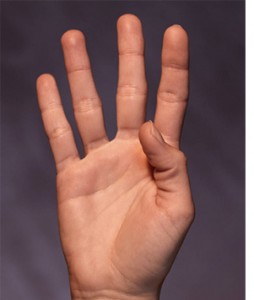4 Foundations
Studying the lives of high-achieving adults revealed these 4 Foundations, lessons each ‘star’ of our success stories mastered early in life; lessons which propelled each of them to the top of their field:
Refuse to Lose – If they are to succeed later on, kids need to learn how to overcome adversity and deal with the consequences of their choices. Persistence, self-reliance and determination are rewarded; whining isn’t.
At the age of nine, Elienne Lawson woke up deaf from a meningitis-induced coma; that was before she learned seven languages. Elienne manages to ignore the word “no” but never fails to understand when someone said “yes!” (For more on her story, see Chapter 22: She Couldn’t Hear Anyone Say ‘You Can’t.’)
A decision to persist toward a goal is a key to overcoming adversity. After all, when we’re babies, we can’t wait to stand up…and we keep falling on our butts until we get it right! When do we lose that? More importantly, can we show our kids how to KEEP that attitude?
Good parenting isn’t about trying to make everything smooth 100% of the time. When they try to walk and fall on their little butts, you don’t walk for them for the rest of their lives do you? Of course not. You can’t do it for them. If you’re tempted, remember the look on your child’s face when those first steps were taken. Was it joy? Accomplishment? Confidence? All of the above.
Work Hard – Successful adults have a well-developed work ethic. Many of the high-achievers we interviewed got to work for some of their ‘wants’ while others got busy helping their families make ends meet.
Simple, honest work done well is not only character-building and financially rewarding, but also its own reward. People who learn to love their work never arrive late or leave early, give their best effort, and they don’t mope or complain.
So when your fourth grader wants you to do her math homework, instead of caving in, explain that you’ve done fourth grade math already and lived to tell about it – and she can too. Watch her self-esteem rise when she ‘gets it’ and she knows she’s right!
Develop Discipline – When parents set clear rules, communicate the consequences, and reinforce consistently, kids eventually develop self-discipline. They also learn that sometimes there is no room for negotiation.
Former Miss Teen USA Charlotte Lopez was born to a mother with severe mental illness. She spent most of her life in foster care. After a rebellious period with one set of foster parents, she had the fortune to land in a new foster home – one with 28 not-to-be-broken rules. (For the full story read Chapter 38: Charlotte Meets the 28 Rules.)
While it’s easy to think of such rules as prison-like, they provided her with a structure within which she learned to set goals. Charlotte’s grades improved, she got a job, she joined the track team, and never missed an opportunity to sing and dance. She went on to win the Miss Teen USA pageant, become an advocate for foster kids, reunite with her brother, and pursue her dream of a career in acting.
You may not want to create a list of 28 rules but you’ll probably pick up a trick or two about enforcing the ones that matter at your house.
Give Back – Giving is a natural high and high achievers give. You can give time, money, expertise, products, services, clothing and food. You can give back what someone gave you, as when a protégé becomes a mentor.
The fact that Michael Johnson has Down Syndrome yet became a successful painter is extraordinary enough…. but we think his story will inspire you to look for even more ways you can inspire generosity and abundance consciousness in your children.
Parenting books rarely discuss the concept of giving back. But, since raising children to give at an early age sets the stage for a lifetime of generosity and success, we think there are some things to think about long before your kids end up exploring the shelves of the adult self-help section.

